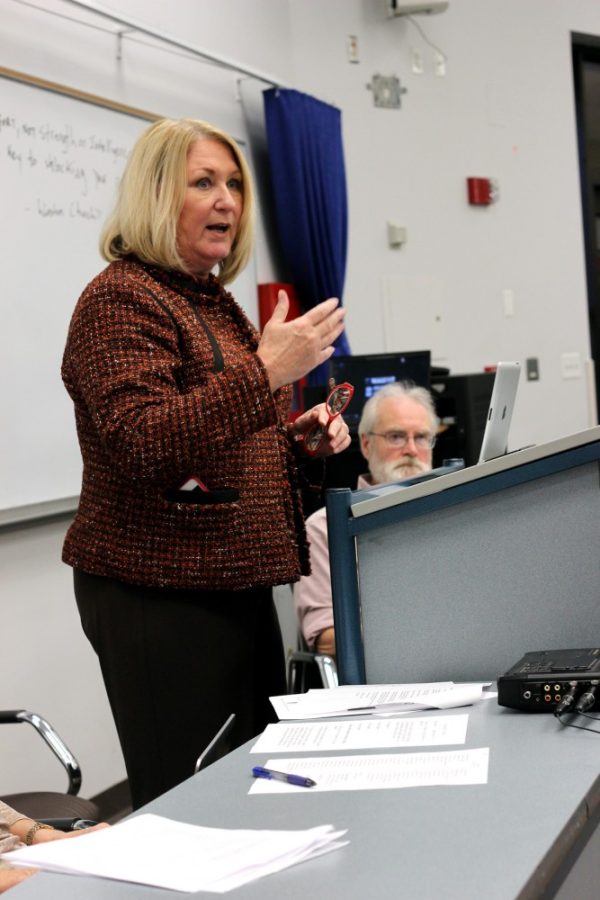Arizona’s executive budget proposal to fund a private, non-profit research organization through the UA is a “bridge to nowhere,” UA President Ann Weaver Hart said at yesterday’s Faculty Senate meeting.
The proposal suggests $15 million be allocated to the UA to be disbursed over five years to the Translational Genomics Research Institute, or TGen, an independent institute that specializes in medical research.
“It isn’t funding for the U of A, but it leaves the impression that it is,” Hart said. “Not one nickel of those dollars has any impact on how the university fulfills its mission. … It’s literally a pass-through.”
The money would only benefit UA faculty members who might be working on research projects with TGen, not the university as a whole, Hart said. The UA’s funding request presented to the Arizona Board of Regents last semester included $15 million for mission-specific funding, which refers to hiring faculty and supporting biomedical research, among other projects.
Hart reported to the Faculty Senate that Arizona’s three state university presidents and members of the board of regents will continue to push for the original $700 million recommendation for higher education funding. Hart said her colleagues, especially president of Arizona State University Michael Crow, agreed that the UA can’t be excluded from the funding proposal.
“We’re not whining,” Hart said. “We’re talking about the future of the state and the future of the citizens of our nation … and that’s the approach we’re taking.”
Hart said that the governor’s budget focused on the recent scandal surrounding Arizona’s Child Protective Services scandal in which CPS failed to investigate 6,000 cases of suspected child abuse, which is a shared concern among everyone in the state. Investigating CPS, however, should not negate the state’s need for higher education funding, she added.
UA Provost Andrew Comrie also updated the faculty on the UA’s transition to Responsibility Centered Management, a new budget model intended to be more transparent and incentive-based, according to its website. The new model will give deans and heads of colleges and departments additional responsibilities and authority.
Comrie presented the model’s subcommittees and its guiding principles, which include the university’s strategic plan, transparency, simplicity and leadership, among others.
The university also hired an independent consultant, Candace Corvey, to help implement the new model. Corvey, former vice president for finance and administration at the University of New Hampshire, worked with an RCM budget model.
“Transparency of the financial model of the institution is tremendously important,” Corvey said.
“The goal is for everyone at the institution to have a decent … understanding of where the money comes from and where it goes.”
Andy Silverman, professor and director of the clinical program at the James E. Rogers College of Law, expressed concern over whether only some deans would embrace their additional responsibilities, and be more sensitive to a new shared governance model.
Corvey said there would be a training factor for deans, department heads and chief financial officers for each unit in the new model, in order to address that concern. In Corvey’s previous experience, she said, some deans were better than others at taking on the additional responsibility and flexibility.
“Some took to it immediately, others took a little while,” Corvey said. “In total it produced better, more inclusive decision-making.”









